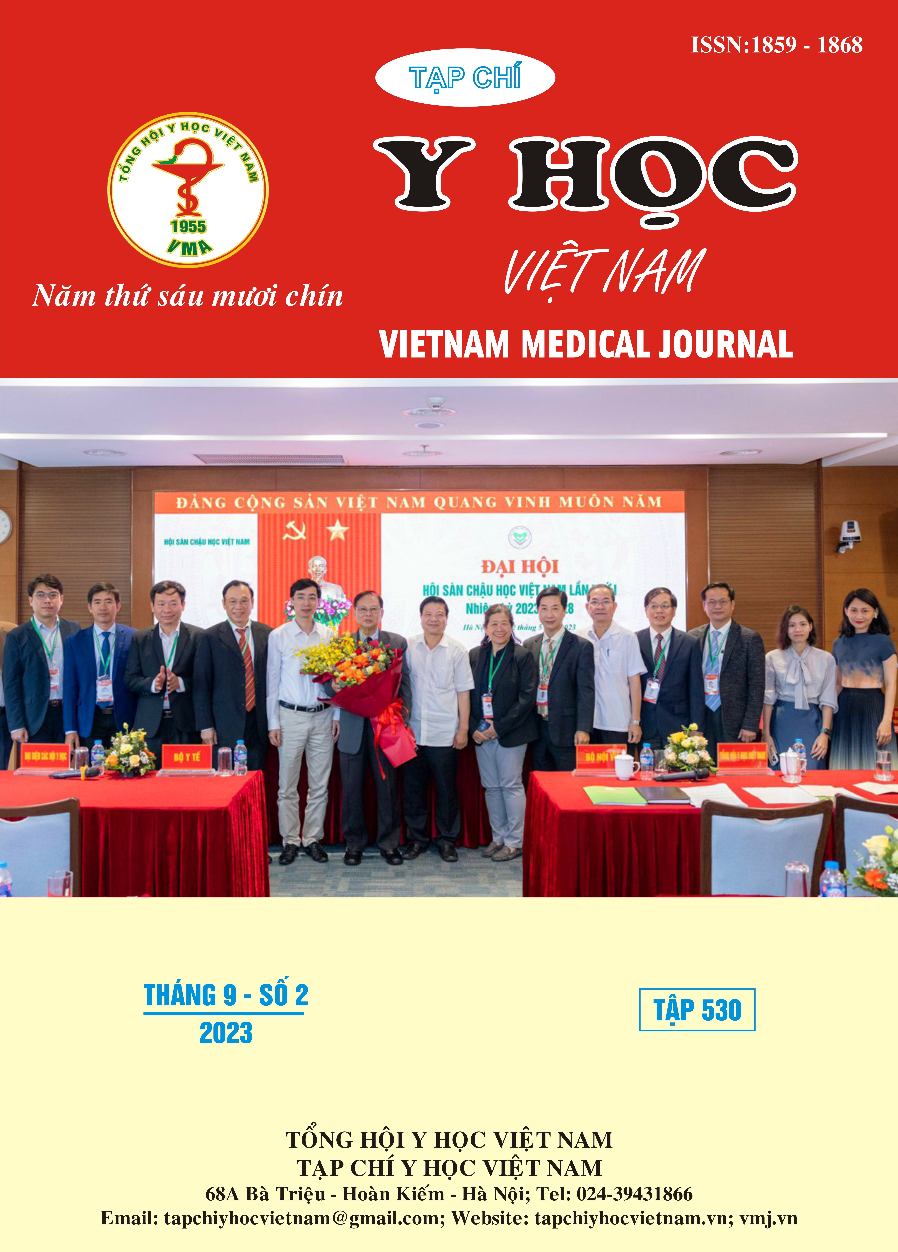EVALUATION OF RESULTS OF LAPAROSCOPIC MANAGEMENT FOR POSTOPERATIVE SMALL BOWEL OBSTRUCTION
Main Article Content
Abstract
Objectives: to evaluate the results of laparoscopic surgery in the treatment of postoperative small bowel obstruction. Patients and methods: retrospective, clinical description on 49 patients diagnosed with postoperative small bowel obstruction and undergoing laparoscopic surgery for treatment at Military Hospital 103 from May 2018 to May 2022. Results: Mean age was 41.8 ± 17.3 (13-76); female accounted for 61.2%, male accounted for 38.8%. Mean time of disease manifestation: 2.7 ± 0.9 days, history of abdominal surgery was 1 time, accounting for 87.8%. Laparoscopic surgery is applied to manage simple, uncomplicated causes of intestinal obstruction. In which: ligament removal (53.1%), removal of intestinal adhesions (38.8%) and 3 patients with intestinal volvulus (6.1%). Laparoscopic surgery helps patients recover early, the mean time after surgery is 1.8 ± 0.8 days, the average time after surgery is 2.1 ± 1.1 days. Laparoscopy also shortens the hospital stay with an average length of stay of 4.5 ± 1.4 days. The rate of complications and complications after surgery is low. Intestinal serosa tear (8.1%), small bowel perforation during de-adhesion 4%, wound infection (2%), early bowel obstruction after surgery (2%), no mortality. Conclusion: Laparoscopic surgery to treat postoperative small bowel obstruction in the research group of patients is safe, feasible, helps patients recover quickly, has a low rate of complications
Article Details
Keywords
Laparoscopy, small bowel obstruction, postoperative small bowel obstruction
References
2. Krausz, M.M., et al., Surgical aspects of gastrointestinal persimmon phytobezoar treatment. Am J Surg, 1986. 152(5): p. 526-30.
3. Ganpathi, I.S. and W.K. Cheah, Laparoscopic-assisted management of small bowel obstruction due to phytobezoar. Surg Laparosc Endosc Percutan Tech, 2005. 15(1): p. 30-2.
4. Suter, M., et al., Laparoscopic management of mechanical small bowel obstruction: are there predictors of success or failure? Surg Endosc, 2000. 14(5): p. 478-83.
5. de Menezes Ettinger, J.E., et al., Laparoscopic management of intestinal obstruction due to phytobezoar. Jsls, 2007. 11(1): p. 168-71.
6. Di Saverio, S., et al., Bologna guidelines for diagnosis and management of adhesive small bowel obstruction (ASBO): 2013 update of the evidence-based guidelines from the world society of emergency surgery ASBO working group. 2013. 8: p. 1-14.
7. Farinella, E., et al., Feasibility of laparoscopy for small bowel obstruction. 2009. 4(1): p. 1-9.
8. Suter, M., et al., Laparoscopic management of mechanical small bowel obstruction: are there predictors of success or failure? 2000. 14: p. 478-483.
9. Levard, H., et al., Laparoscopic treatment of acute small bowel obstruction: a multicentre retrospective study. 2001. 71(11): p. 641-646.
10. O’Connor, D.B. and D.C.J.S.e. Winter, The role of laparoscopy in the management of acute small-bowel obstruction: a review of over 2,000 cases. 2012. 26: p. 12-17.


